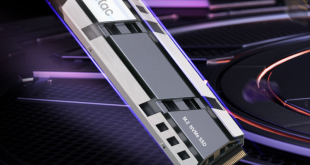Max Payne 3 is a third-person shooter in which the player assumes the role of its titular character, Max Payne. Max Payne 3 features a similar over-the-shoulder camera as its predecessors, with the addition of a cover mechanic, while also retaining much of the same run-and-gun style of gameplay. Max Payne 3 also marks the return of bullet-time in action sequences, for which the franchise is notable.
In bullet-time it is possible to see every bullet strike an enemy in detail. New to the series is a “Last Stand” mechanic, which gives the player a grace period after losing all health during which time the player may kill the enemy that wounded them in order to continue playing, however this mechanic is only usable if the player has one or more bottles of painkillers in their possession.
For this Max Payne 3 test we set the anti aliasing to 2x and Tessellation to High, enabling Direct X 11. At these settings, the game demanded 1813MB of memory.
The game is perfectly playable at these demanding settings, averaging 38 frames per second at 5760×1080.
 KitGuru KitGuru.net – Tech News | Hardware News | Hardware Reviews | IOS | Mobile | Gaming | Graphics Cards
KitGuru KitGuru.net – Tech News | Hardware News | Hardware Reviews | IOS | Mobile | Gaming | Graphics Cards





Thats another beautiful card for AMD. Quite a few really high end, loaded boards for 7970 lovers.
Good review thanks.
ASUS deserve a lot of credit for this – I love it when companies go nuts on the design for the high end audience. Im tempted to go for this later in the year, but I agree – the Sapphire HD7970 6GB Toxic Edition looks to be a slightly better deal all round.
Zardon – top review bro. I still think the GTX680 is the best value for money high end card on the market however. you can pick up a killer one for £380
Im not a fan of triple slot coolers – I think in this case it has helped ASUS lower the noise levels which is welcomed, but they are huge cards and take up so much space in a case. I think Sapphire 6GB Toxic is still the best, but the extramemory really isn’t needed for most people/situations